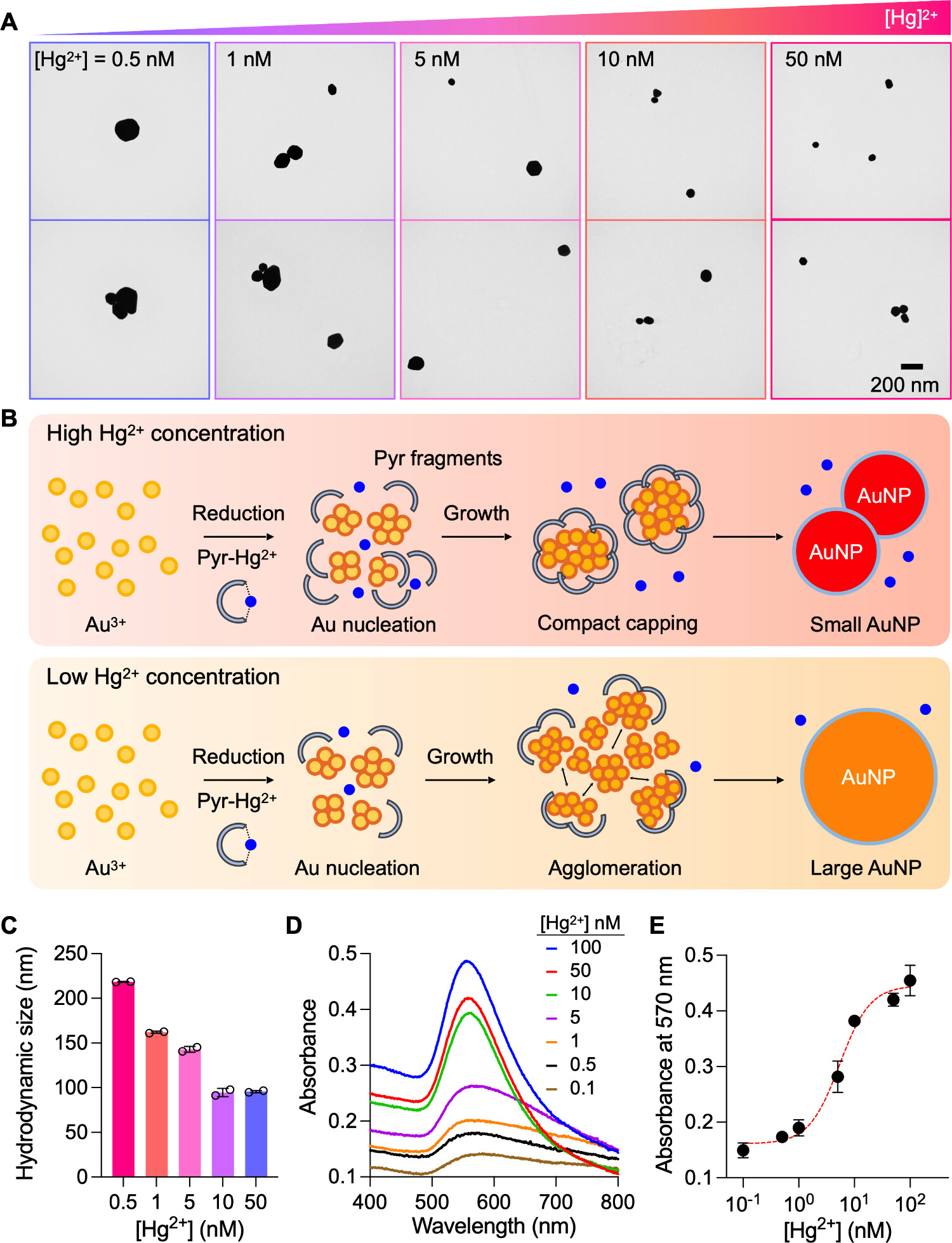Mercury(II) ion sensing through in situ synthesis of gold nanoparticles.
PARK, Jin-hong; NAM, Kyeonghyeon; CHO, Young Kwan; ARAI, Marylyn Setsuko; KIM, Dong-Hwan; LEE, Hakho.
PARK, Jin-hong; NAM, Kyeonghyeon; CHO, Young Kwan; ARAI, Marylyn Setsuko; KIM, Dong-Hwan; LEE, Hakho.





 Abstract: Divalent mercury ion (Hg2+) is a highly toxic substance that significantly impairs the central nervous system and genetic functions. While numerous colorimetric methods have been developed for rapid Hg2+ detection in environmental samples, many existing sensing strategies involve complex processes such as nanostructure/substrate fabrication, recognizer modification, purification steps, or the use of fluorescent measurements. Here, we present a simplified one-pot Hg2+ assay, termed MiDAS (mercury-induced direct AuNP synthesis), utilizing only pyruvate (Pyr) and UV light. The method establishes Hg2+ sensing through in situ synthesis of gold nanoparticles (AuNPs). In this mechanism, Pyr selectively chelates Hg2+ and functions as an effective reducing agent, converting Au3+ to AuNPs and inducing significant optical changes in samples, which was corroborated by density functional theory calculations. The developed assay exhibited high specificity for Hg2+ and generated quantitative signals at concentrations as low as 32 pM [Hg2+]. The potential for on-site application of MiDAS was demonstrated through the detection of spiked Hg2+ in tap water, river water, and canned tuna samples.
Abstract: Divalent mercury ion (Hg2+) is a highly toxic substance that significantly impairs the central nervous system and genetic functions. While numerous colorimetric methods have been developed for rapid Hg2+ detection in environmental samples, many existing sensing strategies involve complex processes such as nanostructure/substrate fabrication, recognizer modification, purification steps, or the use of fluorescent measurements. Here, we present a simplified one-pot Hg2+ assay, termed MiDAS (mercury-induced direct AuNP synthesis), utilizing only pyruvate (Pyr) and UV light. The method establishes Hg2+ sensing through in situ synthesis of gold nanoparticles (AuNPs). In this mechanism, Pyr selectively chelates Hg2+ and functions as an effective reducing agent, converting Au3+ to AuNPs and inducing significant optical changes in samples, which was corroborated by density functional theory calculations. The developed assay exhibited high specificity for Hg2+ and generated quantitative signals at concentrations as low as 32 pM [Hg2+]. The potential for on-site application of MiDAS was demonstrated through the detection of spiked Hg2+ in tap water, river water, and canned tuna samples. @article={003242395,author = {PARK, Jin-hong; NAM, Kyeonghyeon; CHO, Young Kwan; ARAI, Marylyn Setsuko; KIM, Dong-Hwan; LEE, Hakho.},title={Mercury(II) ion sensing through in situ synthesis of gold nanoparticles},journal={ACS Applied Nano Materials},note={v. 8, n. 12, p. 6025-6034 + supporting information},year={2025}}
@article={003242395,author = {PARK, Jin-hong; NAM, Kyeonghyeon; CHO, Young Kwan; ARAI, Marylyn Setsuko; KIM, Dong-Hwan; LEE, Hakho.},title={Mercury(II) ion sensing through in situ synthesis of gold nanoparticles},journal={ACS Applied Nano Materials},note={v. 8, n. 12, p. 6025-6034 + supporting information},year={2025}}